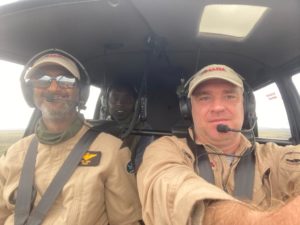 Mara Elephant Project was able to financially support (with a donation of fuel and helicopter hours) and participate in the Kenya Wildlife Service Mara 2021 aerial census. The event was launched by Patrick Omondi and very well-coordinated and handled by our colleague and local area scientist Stephen Ndambuki. Wilson Sairowua acted as a rear-seat observer while CEO Marc Goss acted as the front-seat observer with Riz Jiwa piloting the MEP leased helicopter (pictured left). We were assigned three census blocks including the Nyakweri Forest, which was included for the first time as part of the survey. The KWS Mara total count is typically run in the wet season before the arrival of the migrant wildebeest, zebra and gazelle that occurs beginning in late July / early August. MEP’s Data & Reporting Manager David Kimanzi helped the GIS team with collating and compiling the count data, and long-term monitoring (LTM) team member Sarafina Sironka helped with transcribing count dictations. We don’t have results yet, but MEP has committed to supporting KWS with finalizing and publishing the final report.
Mara Elephant Project was able to financially support (with a donation of fuel and helicopter hours) and participate in the Kenya Wildlife Service Mara 2021 aerial census. The event was launched by Patrick Omondi and very well-coordinated and handled by our colleague and local area scientist Stephen Ndambuki. Wilson Sairowua acted as a rear-seat observer while CEO Marc Goss acted as the front-seat observer with Riz Jiwa piloting the MEP leased helicopter (pictured left). We were assigned three census blocks including the Nyakweri Forest, which was included for the first time as part of the survey. The KWS Mara total count is typically run in the wet season before the arrival of the migrant wildebeest, zebra and gazelle that occurs beginning in late July / early August. MEP’s Data & Reporting Manager David Kimanzi helped the GIS team with collating and compiling the count data, and long-term monitoring (LTM) team member Sarafina Sironka helped with transcribing count dictations. We don’t have results yet, but MEP has committed to supporting KWS with finalizing and publishing the final report.
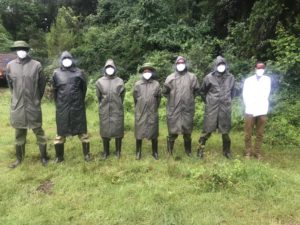 So far May has gotten off to a very wet start in the Maasai Mara. MEP’s rangers have been using their wet weather gear regularly (pictured left) as they respond to rising conflict with crops ripening bordering operational areas. It also makes traversing the Mara a very slow and frustrating task. The increased rain however has really allowed the Mara to turn a vibrant green and MEP’s LTM team has been able to capture some amazing photos of wildlife enjoying the long grasses and an African grass owl in Mara North Conservancy while conducting their research in the field. They’ve been making great strides in documenting and identifying individuals throughout Mara North Conservancy and Lemek Conservancy.
So far May has gotten off to a very wet start in the Maasai Mara. MEP’s rangers have been using their wet weather gear regularly (pictured left) as they respond to rising conflict with crops ripening bordering operational areas. It also makes traversing the Mara a very slow and frustrating task. The increased rain however has really allowed the Mara to turn a vibrant green and MEP’s LTM team has been able to capture some amazing photos of wildlife enjoying the long grasses and an African grass owl in Mara North Conservancy while conducting their research in the field. They’ve been making great strides in documenting and identifying individuals throughout Mara North Conservancy and Lemek Conservancy.
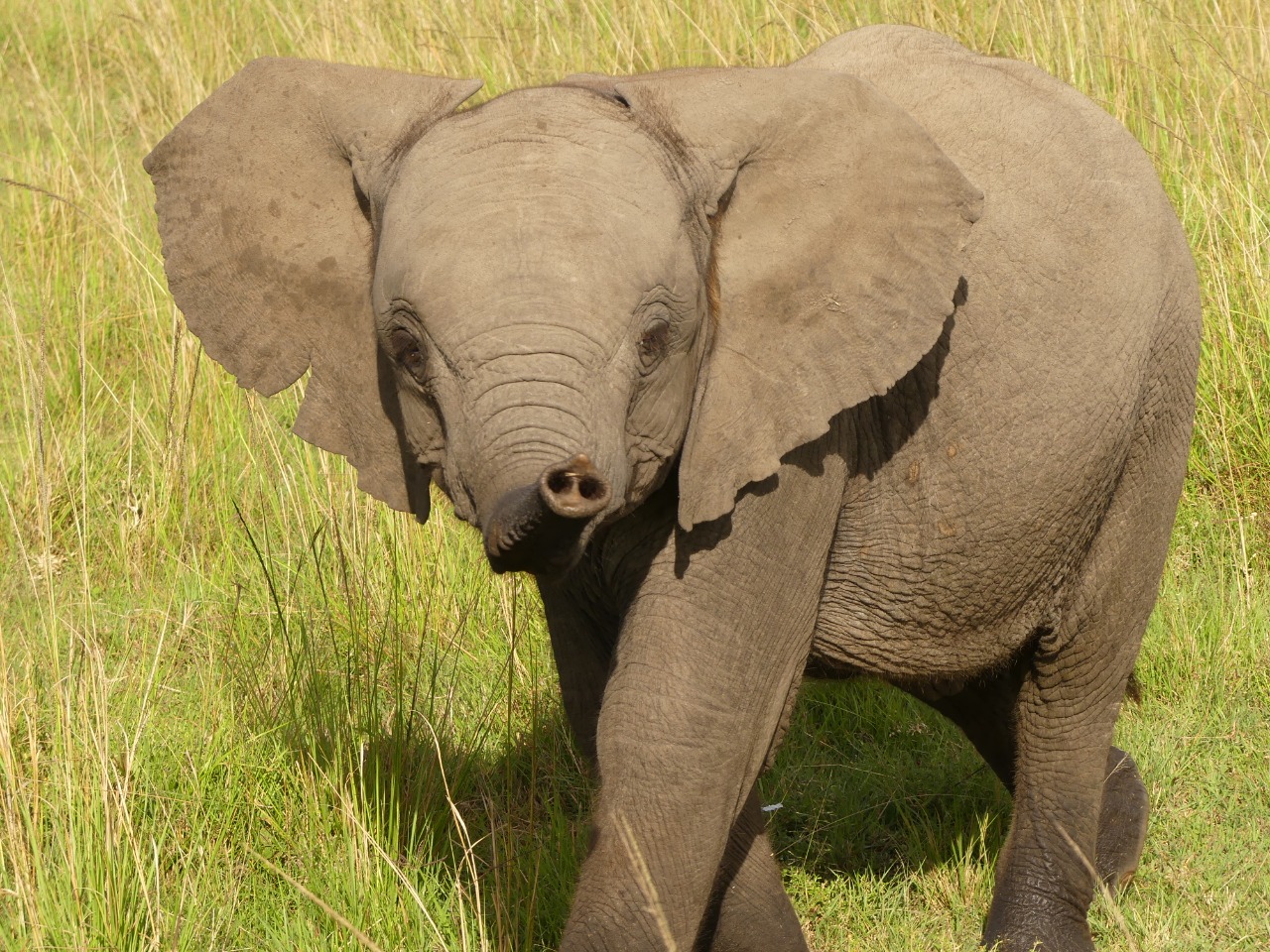
A baby elephant photographed by the MEP LTM Team in May.
In May, the team recorded a big bull on Lemek Conservancy we’ve nicknamed ‘Vincent’. We believe he would be a good candidate for a collar given the number of wounds we observed on him that suggest that he’s a crop-raider. Our request to KWS for deploying a further 25 collars across the GME has now been approved and we are starting to look for new candidates in addition to the collars that need replacing on currently tracked individuals.

The elephant ‘Vincent’ photographed in Lemek by the MEP LTM team.
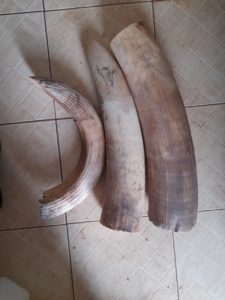 On May 7, the MEP intelligence unit was involved in the arrest of one suspect in Busia in possession of two elephant tusks weighing 9 kg and one hippo tooth (pictured left). KWS, working off of intelligence gathered by undercover MEP operatives, were able to arrest the Ugandan national who had brought the tusks over the border in order to sell them. The arrest and seizure made national news: Africa Science News and the Daily Monitor.
On May 7, the MEP intelligence unit was involved in the arrest of one suspect in Busia in possession of two elephant tusks weighing 9 kg and one hippo tooth (pictured left). KWS, working off of intelligence gathered by undercover MEP operatives, were able to arrest the Ugandan national who had brought the tusks over the border in order to sell them. The arrest and seizure made national news: Africa Science News and the Daily Monitor.
On May 11, the MEP / Sheldrick Wildlife Trust (SWT) Mau De-Snaring Unit stationed in the Mau Forest arrested two suspects in possession of 128 cedar posts being transported via donkey out of the forest. Then, the very next day, they successfully arrested two additional suspects transporting 40 posts and found 38 trees that were in production. Later in the month, the MEP SWT Mau De-Snaring Unit “golf” team stationed in the Mau received information from an informer that people were going into the forest and carting out charcoal. MEP rangers set up an ambush later that night to catch the culprits; however, unable to find the charcoal production operation, they extended their patrol. This paid off when they came upon a poacher’s campsite and were able to confiscate bushmeat, snares and destroyed the poacher’s camp so if the suspects returned, they were without their supplies.

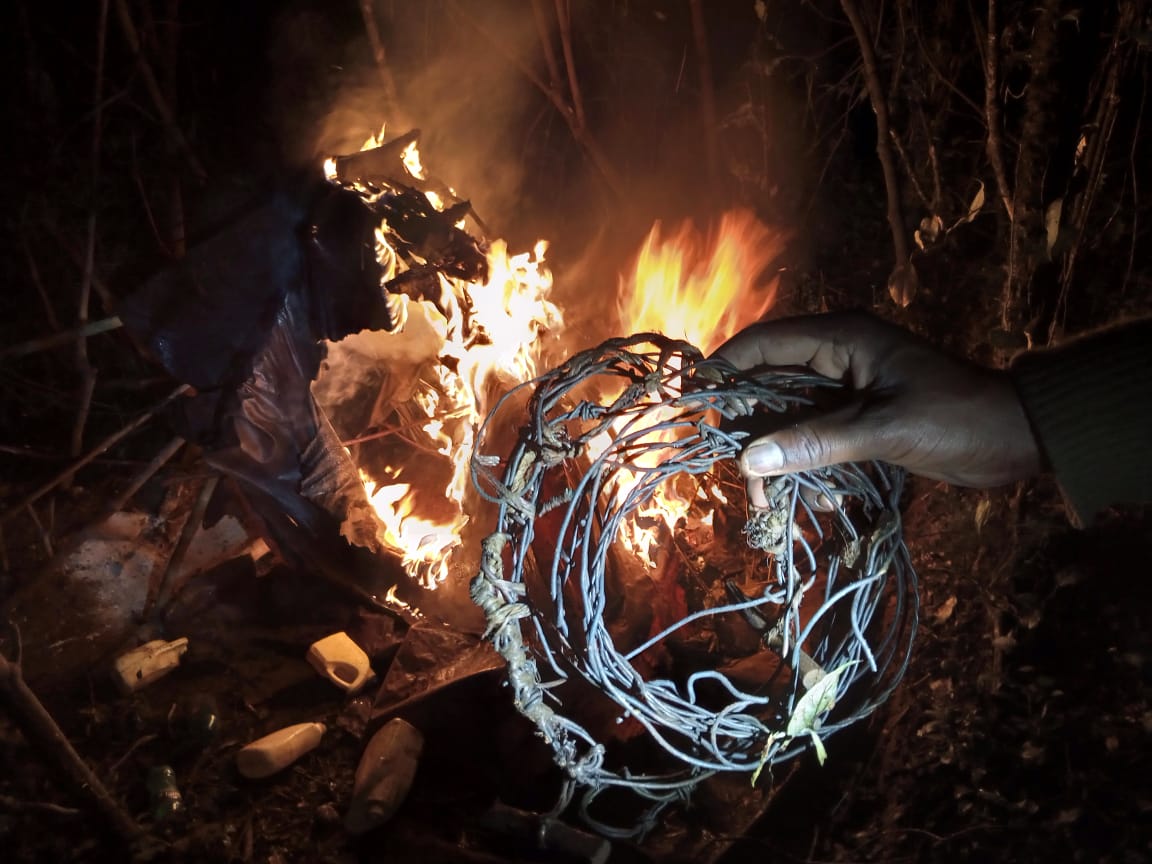
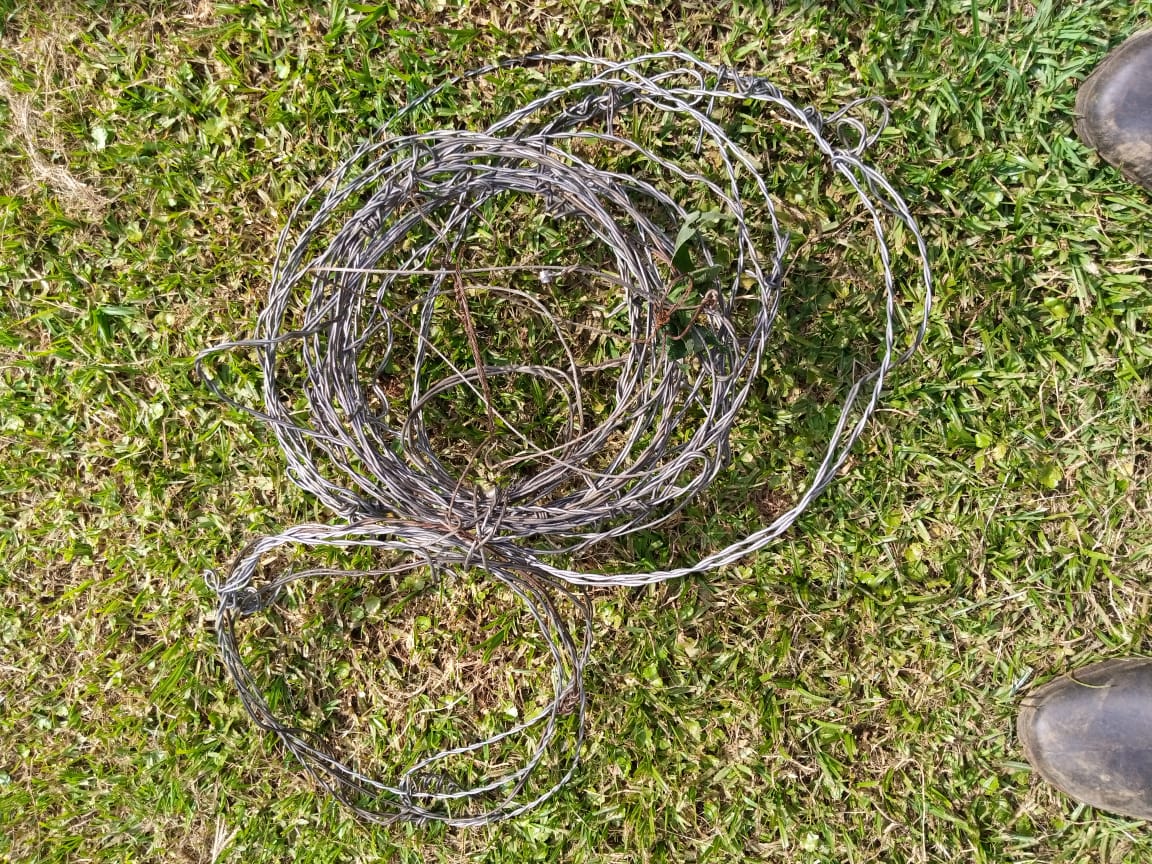
MEP rangers while on patrol in the Mau removed 15 snares on May 29.
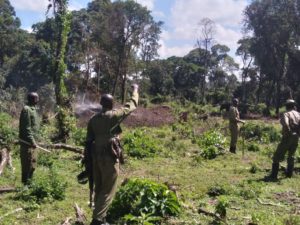 The MEP “Alpha” ranger unit stationed in the Nyakweri Forest is tasked with mitigating conflict between elephants residing in the forest, including collared elephant Fitz, and surrounding communities as well as combatting habitat destruction inside the forest. We wanted to show you just how close elephants come to harmful habitat destruction activities, like charcoal production. On May 25, the team photographed a herd of elephants inside the forest right next to an active kiln; a charcoal production site they were investigating and preparing to destroy (pictured left). Elephants in the Mara are losing their habitats and MEP rangers are tasked with ensuring that it’s protected in the short term all while our research department works to find long-term solutions so that people and wildlife can peacefully co-exist.
The MEP “Alpha” ranger unit stationed in the Nyakweri Forest is tasked with mitigating conflict between elephants residing in the forest, including collared elephant Fitz, and surrounding communities as well as combatting habitat destruction inside the forest. We wanted to show you just how close elephants come to harmful habitat destruction activities, like charcoal production. On May 25, the team photographed a herd of elephants inside the forest right next to an active kiln; a charcoal production site they were investigating and preparing to destroy (pictured left). Elephants in the Mara are losing their habitats and MEP rangers are tasked with ensuring that it’s protected in the short term all while our research department works to find long-term solutions so that people and wildlife can peacefully co-exist.

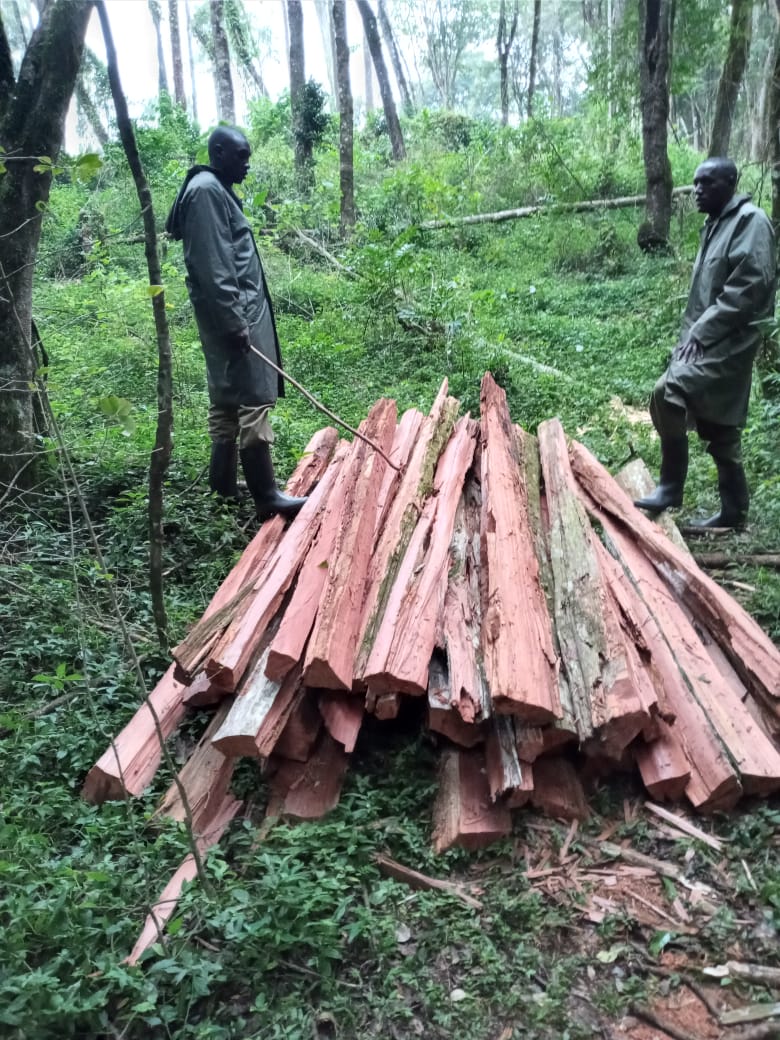
Rangers in Loita recovered 12 pieces of cedar and 18 pieces of timber on May 24.
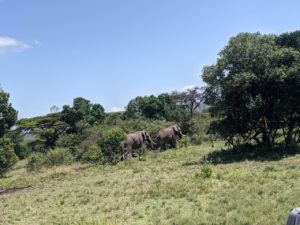 Overall, in May, MEP rangers alongside government partners arrested four bushmeat poaching suspects, removed 24 snares and confiscated 6 kg of bushmeat. They destroyed eight kilns and recovered one power saw and 433 posts, 18 timbers and arrested 17 suspects for habitat destruction activities. There were 14 total conflict incidents (pictured left: Two bulls were inside an electric fence in Rekero area and successfully pushed to safety.) during May that MEP rangers responded to for mitigation. In May, MEP rangers covered a distance of 1,620.4 km on foot, 8,602.6 by car and 5,387.6 km on motorbike. The GIS team catalogued a further 360 km of fencing in May. We’ve benefited from an overhaul of our ‘Njia’ mapping application that is being improved by a volunteer developer.
Overall, in May, MEP rangers alongside government partners arrested four bushmeat poaching suspects, removed 24 snares and confiscated 6 kg of bushmeat. They destroyed eight kilns and recovered one power saw and 433 posts, 18 timbers and arrested 17 suspects for habitat destruction activities. There were 14 total conflict incidents (pictured left: Two bulls were inside an electric fence in Rekero area and successfully pushed to safety.) during May that MEP rangers responded to for mitigation. In May, MEP rangers covered a distance of 1,620.4 km on foot, 8,602.6 by car and 5,387.6 km on motorbike. The GIS team catalogued a further 360 km of fencing in May. We’ve benefited from an overhaul of our ‘Njia’ mapping application that is being improved by a volunteer developer.
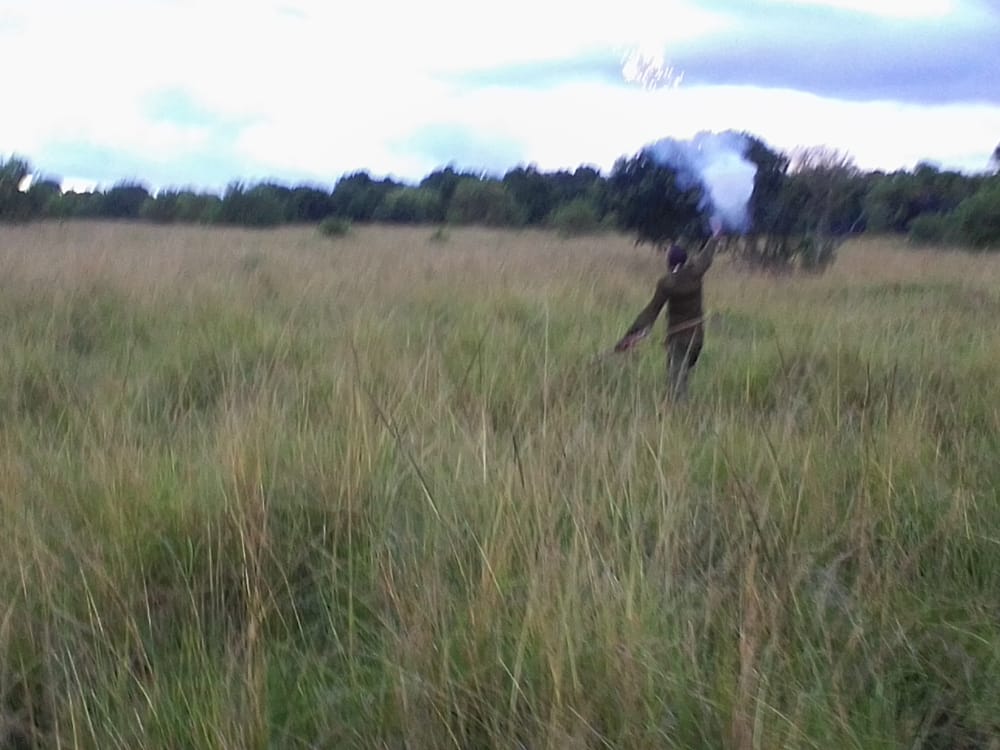
Conflict mitigation done on May 4 by MEP rangers in the Mara moving elephants away from farms.
Mara Elephant Project is participating in Vulcan’s Conservation Technology Award, which will be granted to two conservation tech innovators in 2021. The grants are $15,000 each and MEP’s Director of Research & Conservation Jake Wall is sitting on the grant panel to review applications. We are really excited about this opportunity! MEP’s Chairman Colin Church was well remembered in an article from The Telegraph published in May. MEP celebrated Mother’s Day in the U.S. and Endangered Species Day abroad with our supporters. We also released our First Quarter 2021 Newsletter. MEP had some amazing entries in the May Greatest Maasai Mara photo competition. Thank you to Clair Nicol, Anne Garcia, Roisin Allen, Talib Almarri, Kathy Karn, Riz Jiwa, Fahad Alshammari, Tracy Miller, Thorsten Hanewald, Prakash Sujir and Mark Boyd for supporting MEP.
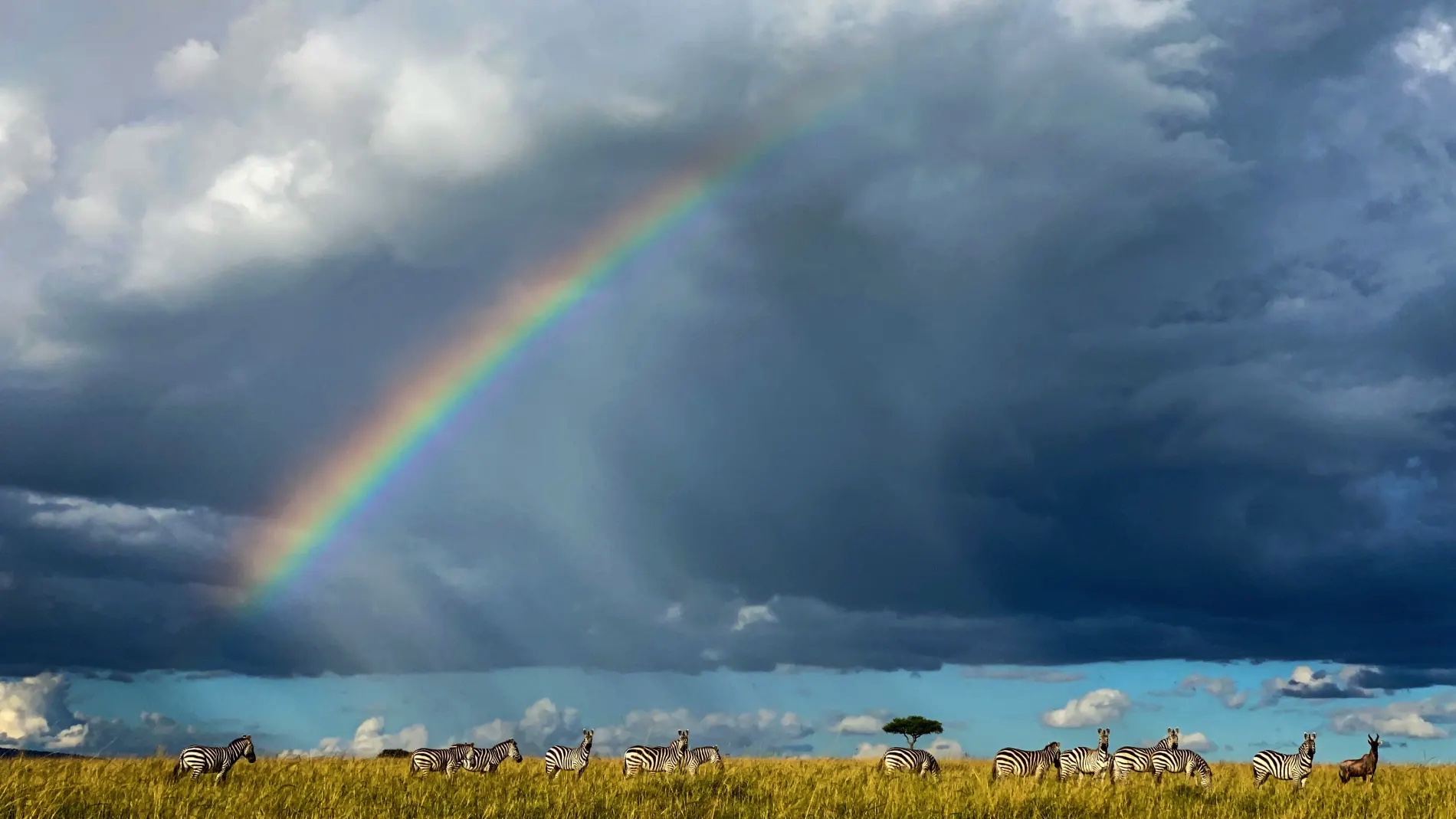
A May entry in the GMM competition by Roisin Allen.


